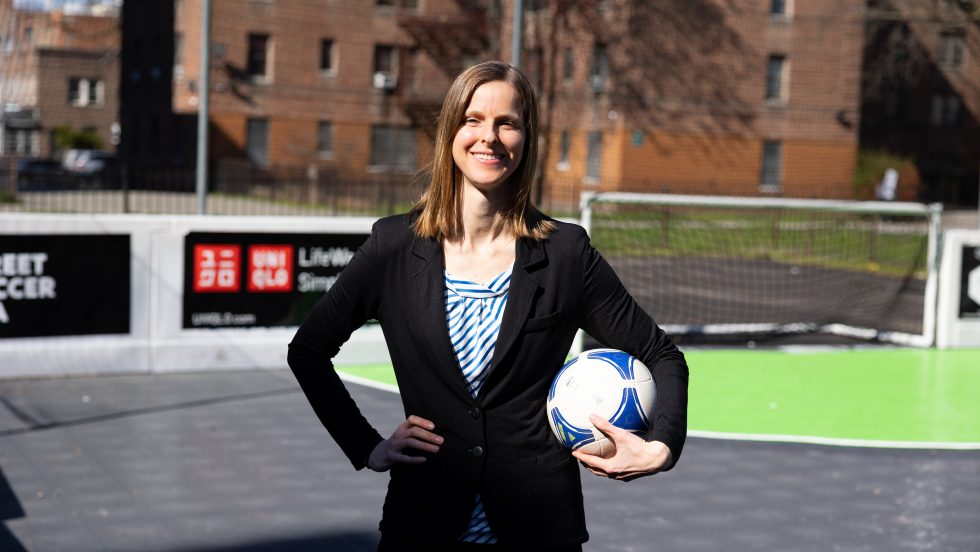
����ӰƬ University's Meredith Whitley, PhD, professor of health and sport sciences and research fellow at the Centre for Sport Leadership and Stellenbosch University, was a collaborator in the study.
Achieving the Healthy People 2030 could save the United States $80 billion in direct medical costs and productivity losses and deliver more than 1.8 million more quality years of life to Americans, according to a .
Every decade since 1980, has provided science-based, 10-year national objectives and targets aimed at improving the health and well-being of the nation. The findings from the study are based on results from a computer simulation model of all youth (ages 6–17 years old) in the United States developed by the PHICOR team at the CUNY Graduate School of Public Health & Health Policy (CUNY SPH) to show what could happen if the nation’s youth sports participation went from the current level of 50.7 percent to the Healthy People 2030’s goal of 63.3 percent.
“Our study shows how achieving this major public health goal outlined by Healthy People 2030 can not only help to prevent diseases and save lives, it can also save our economy billions of dollars,” says Bruce Y. Lee, MD, MBA, executive director of PHICOR, professor at CUNY SPH and senior author of the study. “And those savings will keep recurring if the United States can maintain that level of youth sports participation.”
Tracking Youth Sports Participation and Outcomes
For this study, the PHICOR team worked with The Aspen Institute’s Project Play initiative and collaborators from the U.S. Department of Health and Human Services (HHS), ����ӰƬ University, Stellenbosch University, The University of Texas at Austin, Utah State University and Michigan State University. The team developed a computational model to represent U.S. youth participation in sports and tracked their weight changes and mental health outcomes up until they turned 18 years old. The model also simulated and tracked the associated weight-related health outcomes that they could experience over their lifetimes. Results showed that achieving the Healthy People 2030 goal could decrease overweight and obesity prevalence by an absolute 3.37 percent, resulting in 1.71 million fewer cases of overweight/obesity among the youth cohort.
“This was an exciting opportunity to collaborate with the PHICOR team, along with colleagues at The Aspen Institute’s Project Play initiative, the U.S. Department of Health and Human Services, and several top research institutions,” said Whitley. “I’m proud of the computational model we developed, which quantified the health and economic value accrued if more young people participate in youth sports.”
Correlation of Cost Savings to Healthier Lives
A major contributor to the billions of dollars in cost savings was the extent to which increasing physical activity through sports participation helped prevent weight-related health outcomes. The resulting physical health improvements from increasing youth sports participation could avert 352,000 cases of weight-related diseases such as type 2 diabetes, coronary heart disease (CHD), stroke and cancers across the 6- to 17-year-old cohort’s lifetime. This saves more than $22 billion in direct medical costs and more than $25 billion in productivity losses due to improvements in physical health.
The associated cost savings of increased physical activity also include mental health benefits. Previous studies have shown that playing sports can reduce anxiety and depression symptoms among adolescents. Findings from the current study show that the overall reduction in depression and anxiety symptoms from achieving the Healthy People 2030 sports participation target would save $3.61 billion in direct medical costs and $28.38 billion in productivity losses across the youth cohort.
The cost savings far exceed current investment in increasing youth sports participation. Before the pandemic, The Aspen Institute estimated that $30 billion to $40 billion was spent by families on youth sports based on surveys and national sports participation data. This means that the investment in youth sports could double and still result in net cost savings across the youth cohort’s lifetime. Further, the overall findings may be on the conservative side as the model did not account for chronic health conditions outside of weight-related ones, potential indirect effects of sports participation, or the impact of sports participation on academic performance, social skills, emotional regulation or mood.
Even moving the needle on participation by a relatively small amount can save billions of dollars. For example, just increasing youth sports participation back to pre-COVID levels, 58.4 percent, could save a total of $29.17 billion. Youth sports participation levels took a hit in 2020–2021 in part due to the effects of the COVID-19 pandemic and the associated impact that social distancing requirements had on kids’ ability to regularly play sports.